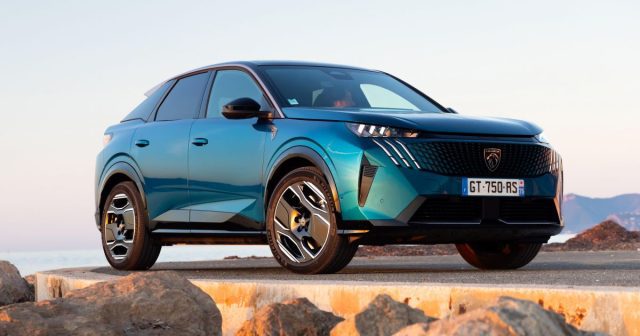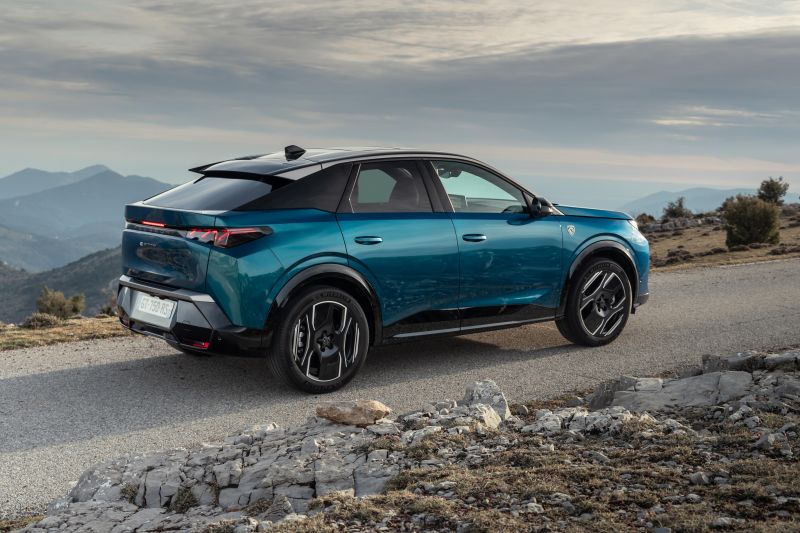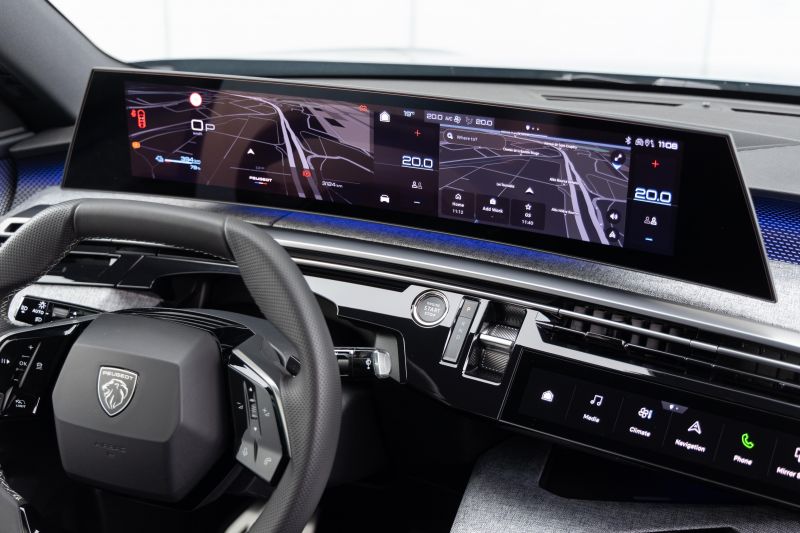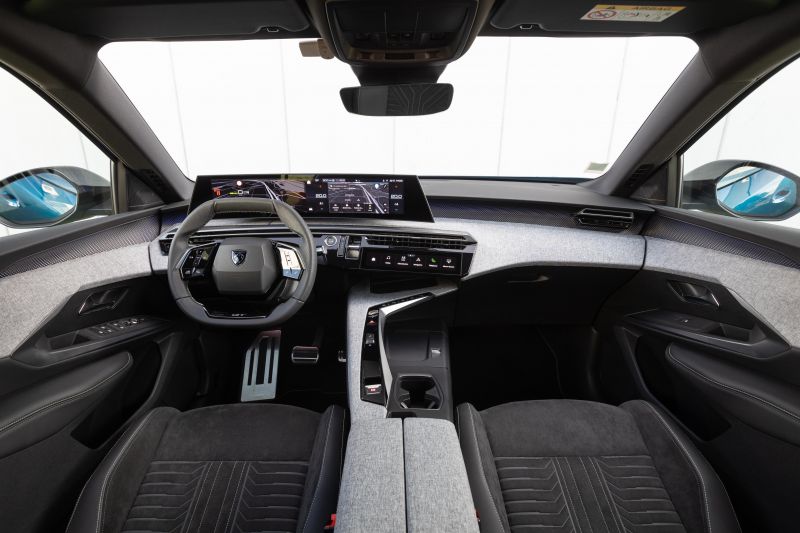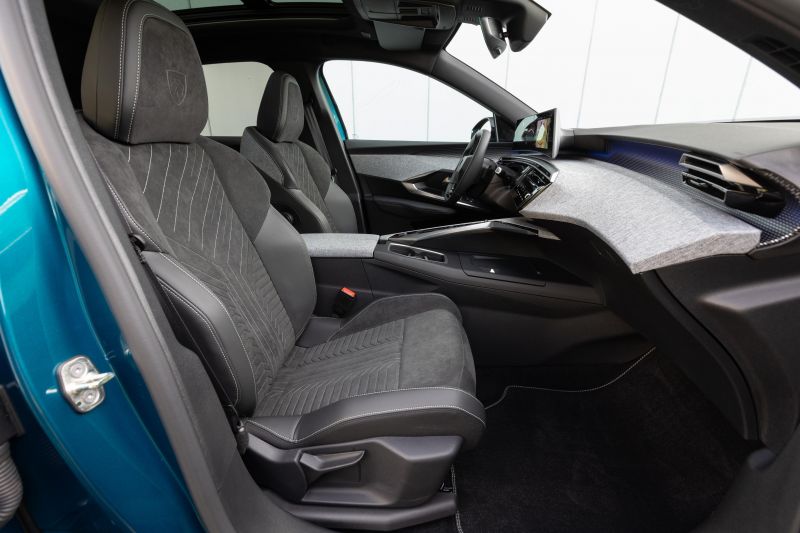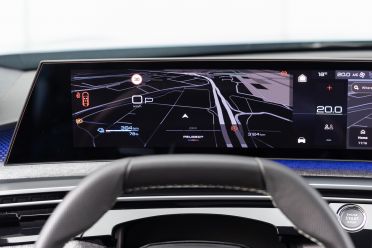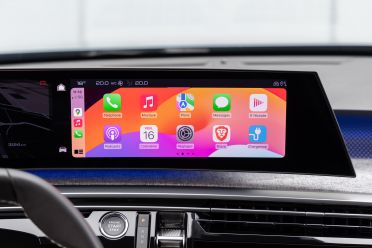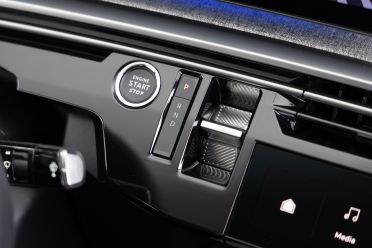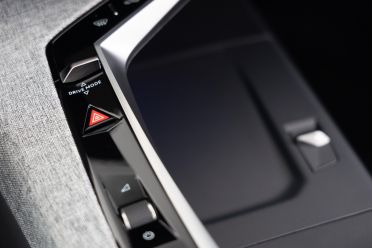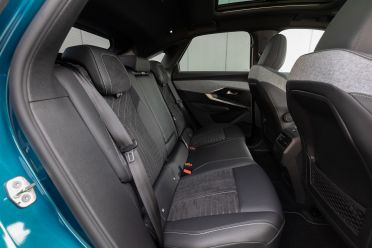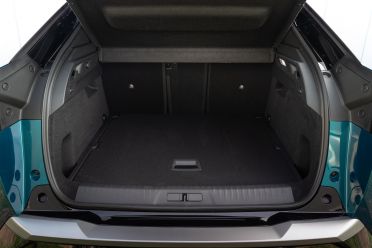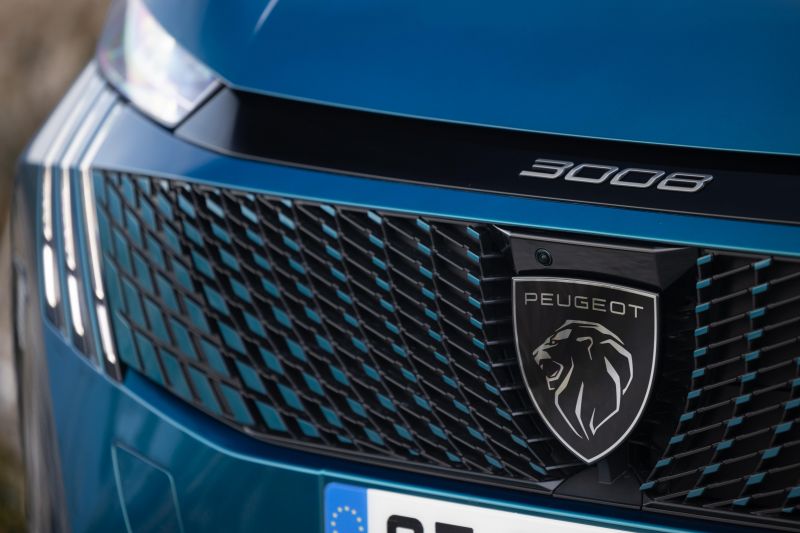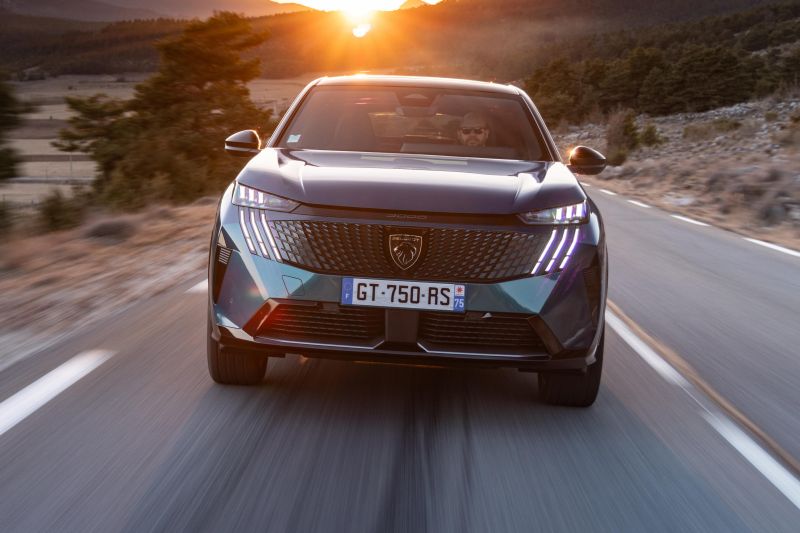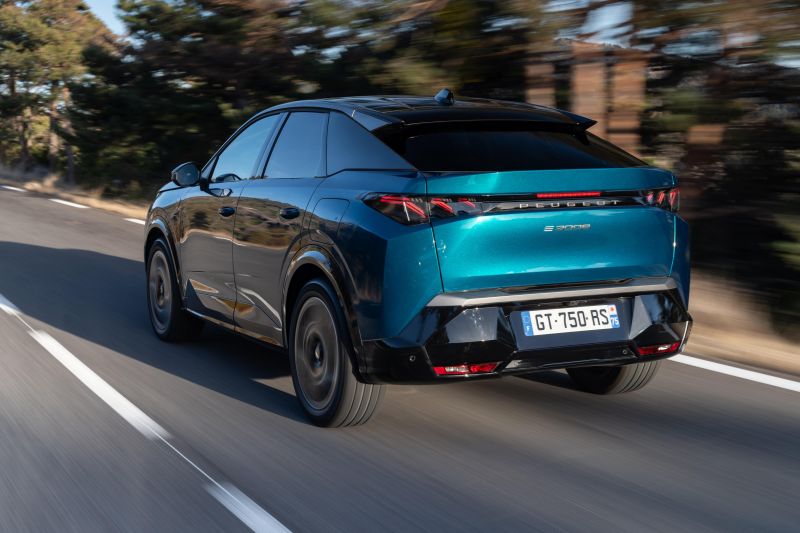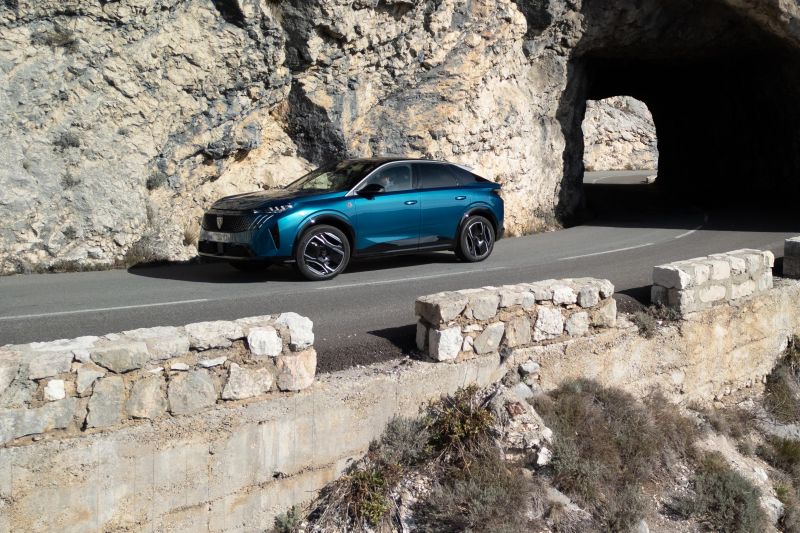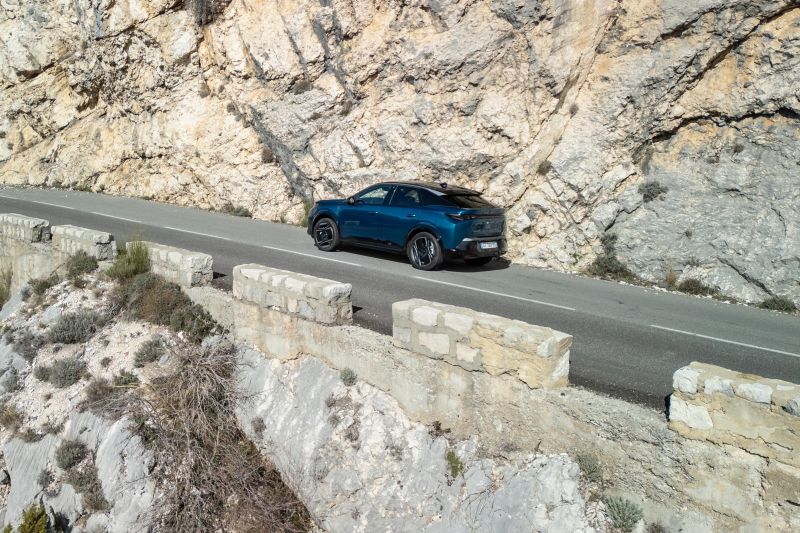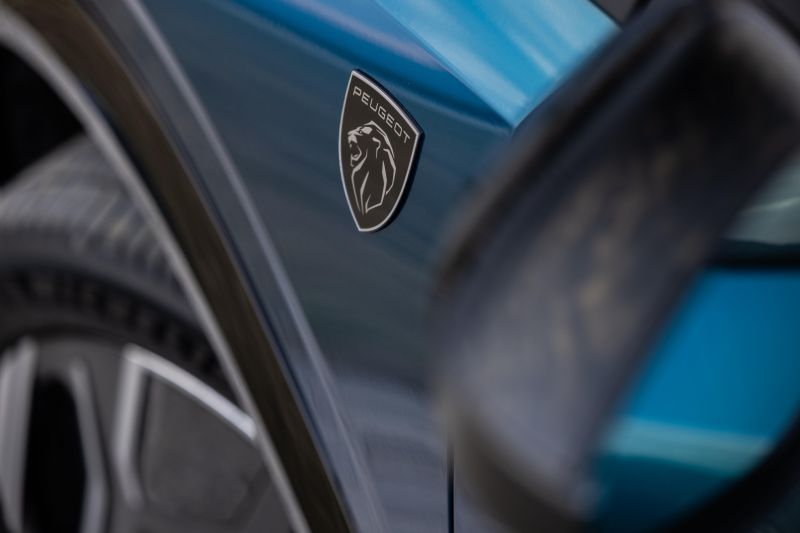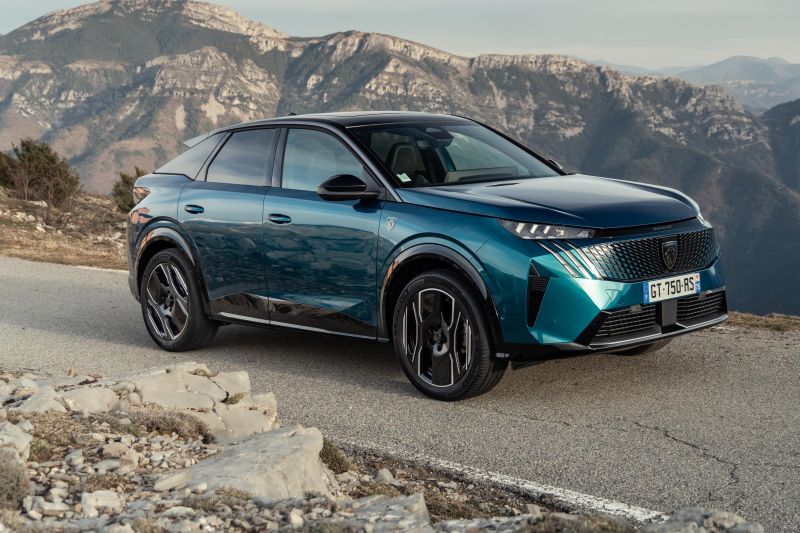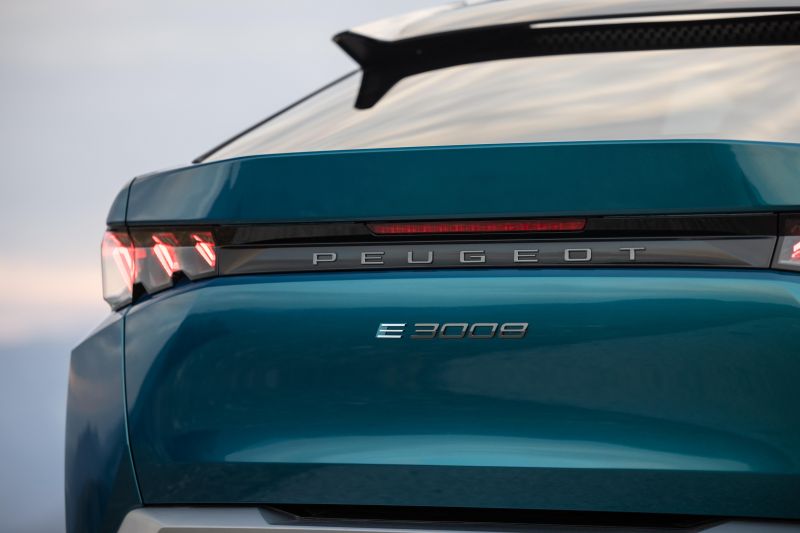Peugeot is getting aggressive with its electric car rollout in Australia.
It already sells the E-2008 SUV locally, and it’ll soon be joined by the E-208 and E-308 hatchbacks, along with the E-Partner electric van. From the second half of 2024, also be joined by the funky looking E-3008 SUV on test here.
The current 3008 is the best-selling Peugeot in Australia, and is offered with a choice of petrol or plug-in power. This new model is debuting with electric power, before petrol and plug-in hybrid models follow globally.
In Australia, all we know is that the E-3008 is coming – and the mild-hybrid petrol will likely hit local showrooms as soon as possible afterwards, given the current car’s significance on the sales charts.
When it touches down, the 2024 Peugeot E-3008 will join the madding crowd of electric SUVs chasing the Tesla Model Y, rubbing shoulders with everything from the Renault Megane E-Tech to the Hyundai Ioniq 5.
Although Peugeot Australia hasn’t officially confirmed it, the global product manager for the car told CarExpert the only model that’ll be offered at launch worldwide will be the standard range front-wheel drive, with AWD and long range options to follow in 2025.
When it lands, the E-3008 will look like nothing else on Australian roads. Its fastback design is distinctive, and details like the lack of visible weather seals and shrouding around the front grille make give it a unique presence.
As for the fastback? We’ll let you be the judge.
How does the Peugeot 3008 compare?
View a detailed breakdown of the Peugeot 3008 against similarly sized vehicles.

Peugeot
3008
How much does the Peugeot E-3008 cost?
Pricing for the E-3008 hasn’t been locked in for Australia, but we know how much it’ll set you back in right-hand drive England.
The base Allure kicks off at £45,850 drive-away, equivalent to around $89,500 in Australia. The range-topping GT will set you back £38,150 drive-away, or around $96,750 in Australia.
It’s not unusual for cars to be more expensive in the UK than Australia; the 308 GT in Australia is $43,990 before on-road costs, compared to the equivalent of around $62,000 in Britain – in other words, British prices aren’t gospel.
It’s also worth noting only the base front-wheel drive model with a 73kWh battery pack is available in the UK. That’s potentially an omen as to what we’ll get Down Under, given we’re also right-hand drive.
What is the Peugeot E-3008 like on the inside?
This is a stunning car inside, especially when you consider it’s not meant to be taking on Mercedes-Benz or BMW.
The top-end GT blends leather seats with warm, grey fabric trim on the dashboard, and real aluminium trim running around the base of the windscreen onto which the ambient lighting is projected.
Throw in the sculptural dash design, and the beautifully curved dual-screen setup, and you’ve got a show stopping cabin.
The fundamentals are pretty solid as well.
The (manual) front seats offer plenty of support for awkward bodies, complete with lumbar adjustment for the driver, and the latest iteration of Peugeot’s controversial iCockpit no longer forces you to choose between having clearance for the wheel or seeing the digital dials.
It’s still going to turn some people off, but Peugeot has gradually refined its tiny wheel and high-set instruments to the point it’s no longer immediately weird for drivers.
The technology in the E-3008 represents another step forward for Peugeot, too.
Unlike some brands, it hasn’t stuck two screens together in a gloss black surround. The 21-inch setup is one beautiful curved screen, with glossy graphics that look like they’ve been lifted from a more expensive car.
It’s more usable than before as well.
Previously, simple tasks like changing the temperature took way too many button presses. They’re simpler now, although there are still some funky ergonomic decisions.
The start button and transmission selector, for example, is tucked behind the wheel in a spot that had me clipping the windscreen wiper stalk by accident.
Sitting below the central part of the screen is a row of what Peugeot calls i-Toggles… which is a row of programmable function buttons on a slim touchscreen designed to make it easier to bounce through the infotainment system.
Setting it up takes some time, but once you’re there we found in the 308 it’s a neat solution.
Storage space up front is excellent. Along with a wireless phone charger on a floating step below the dashboard, there’s a deep bin for phones or wallets (with two USB-C ports) under a folding lid.
You also get cupholders, and a big space beneath the Mercedes-Benz style split armrest.
Rear seat space has taken a hit in the transition from the previous, boxier car to the current fastback. Rear headroom isn’t great for taller passengers, despite the fact Peugeot says the fastback design was intended to minimise the impact of a sloping roof on space back there.
Legroom is fine for the class, but not much more. Peugeot confirmed there’s a few millimetres less space compared to the old car, a decision made to preserve boot space beneath the sloping rear windscreen.
On the plus side, kids will appreciate the air vents, USB-C ports, and fold-down central armrest.
As for the boot? The claimed 520 litres of space is competitive with the likes of the Hyundai Ioniq 5, and it’s a broad, flat space – although it is possible to drop the floor to free up even more space, with a more pronounced lip over which to load heavy items.
What’s under the bonnet?
At launch, the E-3008 will be offered globally in Standard Range FWD guise. Standard Range AWD and the Long Range FWD will follow in 2025.
| Model | Standard Range FWD | Standard Range AWD | Long Range FWD |
|---|---|---|---|
| Drivetrain | Single-motor electric | Dual-motor electric | Single-motor electric |
| Battery | 73kWh lithium-ion | 73kWh lithium-ion | 98kWh lithium-ion |
| Power | 157kW | 240kW | 170kW |
| Torque | 343Nm | 509Nm | 343Nm |
| Driven Wheels | Front-wheel drive | All-wheel drive | Front-wheel drive |
| Weight | 2108kg | N/A | N/A |
| Energy efficiency (claimed) | 13.4-14.1kWh/100km | N/A | N/A |
| Energy efficiency (observed) | 16.1kWh/100km | N/A | N/A |
| Claimed range | 525km | 525km | 700km |
| Max DC charge rate | 160kW | 160kW | 160kW |
How does the Peugeot E-3008 drive?
We only drove the base model on the global launch in France. It’s leading the charge for Peugeot, with all-wheel drive and long range options to follow in 2025.
With a small-ish wheel and quick steering, it can take a moment to adjust your inputs relative to driving some of its rivals.
Once you’re dialled in though, it’s quite a nice thing to thread through tight city streets.
Although it lacks the grunt to really squeeze you back in your seat, the instant torque from an electric motor means the E-3008 feels responsive when you put your foot down at low speeds.
It made overtaking the constant stream of cyclists enjoying the French Riviera during our test drive easier than it would have been in the old 1.6-litre model.
Peugeot’s regenerative braking (which slows the car, and harvests energy usually lost to heat and dust under braking into the battery) is smartly tuned, with three modes ranging from barely there to so strong it should be one-pedal driving.
Although it’ll slow the car to 7.5km/h, even the most aggressive option doesn’t stop it completely.
One of the downsides of electric cars? They’re heavy. The petrol 3008 on sale in Australia today tips the scales at 1429kg, and the PHEV weighs 1840kg.
This E-3008 is more than two tonnes, and it shows at times.
The ride in the range-topping GT is quite busy, even on what are generally very smooth roads in the south of France.
It just never quite settles down, with a subtle (but noticeable) pitter-patter constantly noticeable through the seats and steering wheel.
It settles down nicely at higher speeds though, humming confidently along at 110km/h.
There’s very little wind or road noise on smooth French motorways, and the adaptive cruise control does a good job maintaining a gap to the car in front.
Peugeot’s lane-centring system doesn’t feel like it wants to rip the wheel out of your hands, and the speed limit warning is unusually polite. Rather than bleating at you when you drift over the limit, it fulfils its regulatory duty subtly.
Off the motorway in the foothills surrounding Nice, the roads get narrow and twisty as they scythe through ancient rock formations.
The quick steering in the E-3008 is not all that far removed from what you’d expect of a sports car, and the GT badge hints at a sporty streak, but this isn’t a sports car.
It’s best enjoyed at seven-tenths; any faster and it starts to feel very heavy. Is that likely to upset the average buyer? Probably not.
What do you get?
We don’t have local specs as yet, but here’s the European grade walk as a guide.
E-3008 Allure highlights:
- 19-inch alloy wheels
- Half-leatherette seat trim
- Keyless entry and start
- Reversing camera
- Rear parking sensors
- LED headlights
- 10-inch digital instrument cluster
- 10-inch touchscreen infotainment system
- Wireless Apple CarPlay, Android Auto
- DAB+ digital radio
- Connected services
E-3008 GT adds:
- 20-inch alloy wheels
- Pixel LED headlights
- Front parking sensors
- Powered tailgate
- Heated front seats
- Heated steering wheel
- Wireless phone charger
- Customisable ambient lighting
- 21-inch curved ‘Panoramic i-Cockpit’
- Customisable infotainment toggles
Is the Peugeot E-3008 safe?
The Peugeot E-3008 hasn’t been crash tested by Euro NCAP, meaning it doesn’t currently have an ANCAP rating.
Standard safety equipment across the range includes:
- AEB with Pedestrian, Cyclist detection (7-140km/h)
- Lane departure warning
- Lane keep assist
- Driver attention monitoring
- Blind-spot monitoring
How much does the Peugeot E-3008 cost to run?
Peugeot backs its range in Australia with a five-year, unlimited-kilometre warranty.
The battery in the is backed by an eight-year, 160,000 kilometre warranty to 70 per cent of its original capacity.
The first five years of maintenance (required every 12 months or 25,000km) will set you back a total of $1522 in the little E-2008, as a guide for what to expect from the bigger E-3008.
CarExpert’s Take on the Peugeot E-3008
The Peugeot E-3008 looks special on the outside, and feels special on the inside.
If it can manage to get bums on seats when the car touches down, Peugeot will no doubt sell a few on the strength of the cabin alone.
It’s a shame the rear seat hasn’t been improved compared to the outgoing car, given most mid-sized SUVs are expected to do family duty.
A lot rests on where Peugeot prices the E-3008 in Australia. It’ll be facing off with a raft of rivals offering similarly unique exterior designs (Ioniq 5), more compelling driving dynamics (EV6), and more spacious interiors (Model Y).
If it can land a generously-specified E-3008 for similar money to those cars – around the $70,000-$75,000 mark – it has a fighting chance of finding buyers beyond the usual pool of Francophiles.
Click the images for the full gallery
MORE: Buy a Peugeot 3008
MORE: Everything Peugeot 3008















